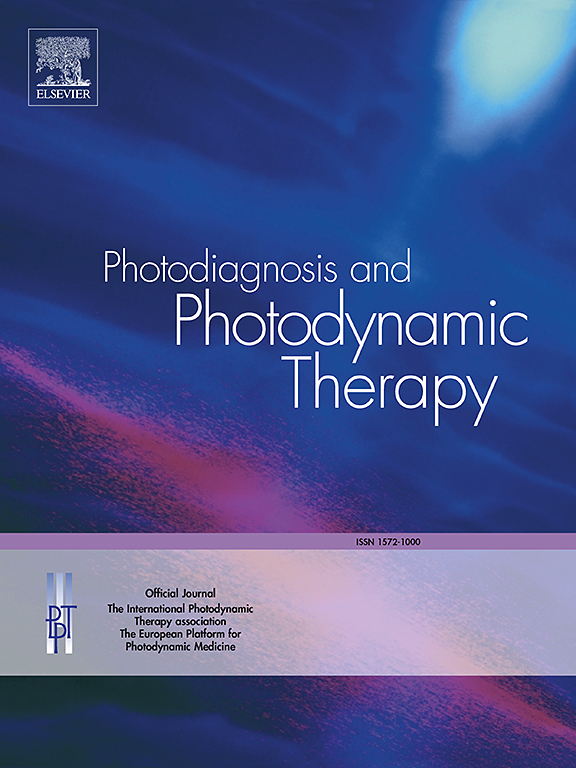发光二极管介导的光生物调节治疗对正畸牙齿运动的影响:文献综述。
IF 3.1
3区 医学
Q2 ONCOLOGY
引用次数: 0
摘要
本研究旨在回顾和分析发光二极管(LED)光生物调节(PBM)治疗对正畸牙齿运动的影响。这种非侵入性技术可以减少与时间相关的副作用,如白斑病变、龋齿和牙根吸收。本综述纳入了5项研究,包括2项动物研究(10周龄和12周龄)和3项人类研究(15至17岁)。所有的研究都将PBM与使用滑动力学的力同时应用于犬齿内收(3项研究)和臼齿外伸(2项研究)。两项研究采用波长为850nm的led,每天曝光时间为5分钟。另外两项研究使用波长为618纳米的led,每天曝光时间为20分钟。总之,这些研究表明,与对照组相比,led介导的PBM可使正畸牙齿移动增加33%(增加1.36倍)。平均每月牙移1.55±0.33 mm,高于对照组的1.06±0.35 mm。此外,没有研究表明任何副作用,如支抗丧失、牙根吸收、犬齿旋转或牙齿倾斜。综上所述,led介导的PBM(波长为618 nm和850 nm)由于其生物刺激特性,可以加速正畸牙齿的运动而不会产生不良影响。考虑到led相对于传统激光的优势,尤其是其更低的成本和更容易的应用,这种方法有望成为加速牙齿运动的工具,有可能减少治疗时间和相关的副作用。本文章由计算机程序翻译,如有差异,请以英文原文为准。
The effect of light-emitting diode-mediated photobiomodulation therapy on orthodontic tooth movement: A literature review
This study aims to review and analyze the impact of light-emitting diode (LED) photobiomodulation (PBM) therapy on orthodontic tooth movement. This non-invasive technique is proposed to reduce time-related side effects, such as white spot lesions, dental caries, and root resorption. Five studies were included in the review, comprising two animal studies (ages 10 and 12 weeks) and three human studies (ages ranging from 15 to 17 years). All studies applied PBM concurrently with force application using sliding mechanics for canine retraction (three studies) and molar protraction (two studies). Two studies employed LEDs with a wavelength of 850 nm, with an exposure time of 5 min daily. Another two studies used LEDs with a wavelength of 618 nm, with an exposure time of 20 min daily. In summary, these studies demonstrated that LED-mediated PBM enhanced orthodontic tooth movement by 33 % (a 1.36-fold increase) compared to the control group. The mean tooth movement per month was 1.55 ± 0.33 mm, which was higher than the control group's average of 1.06 ± 0.35 mm. Also, no studies demonstrated any side effects such as anchorage loss, root resorption, canine rotation, or tooth inclinations. In conclusion, LED-mediated PBM (at wavelengths of 618 nm and 850 nm) can accelerate orthodontic tooth movement without adverse effects, thanks to its biostimulatory properties. Given the advantages of LEDs over traditional lasers—particularly their lower cost and easier application—this method shows promise as a tool to accelerate tooth movement, potentially reducing treatment time and associated side effects.
求助全文
通过发布文献求助,成功后即可免费获取论文全文。
去求助
来源期刊

Photodiagnosis and Photodynamic Therapy
ONCOLOGY-
CiteScore
5.80
自引率
24.20%
发文量
509
审稿时长
50 days
期刊介绍:
Photodiagnosis and Photodynamic Therapy is an international journal for the dissemination of scientific knowledge and clinical developments of Photodiagnosis and Photodynamic Therapy in all medical specialties. The journal publishes original articles, review articles, case presentations, "how-to-do-it" articles, Letters to the Editor, short communications and relevant images with short descriptions. All submitted material is subject to a strict peer-review process.
 求助内容:
求助内容: 应助结果提醒方式:
应助结果提醒方式:


